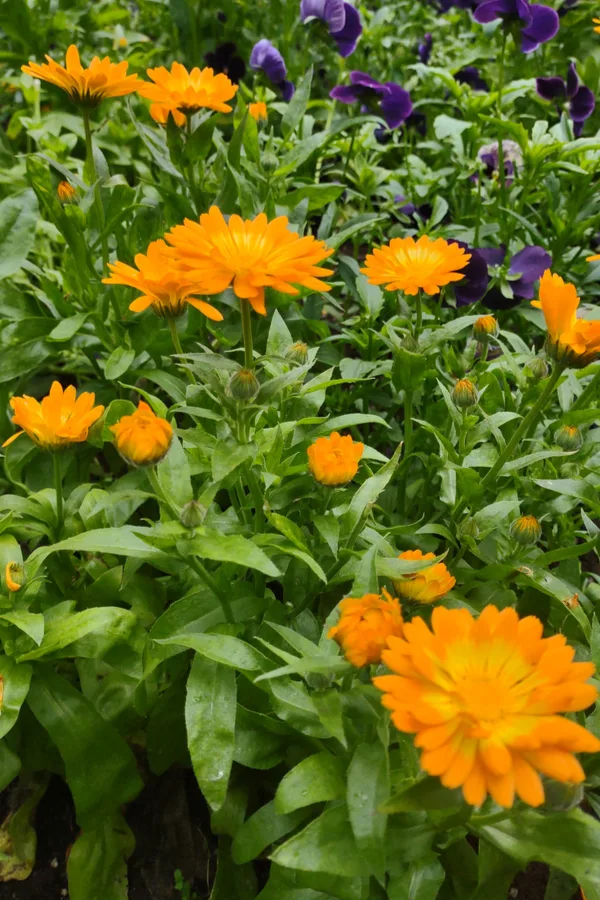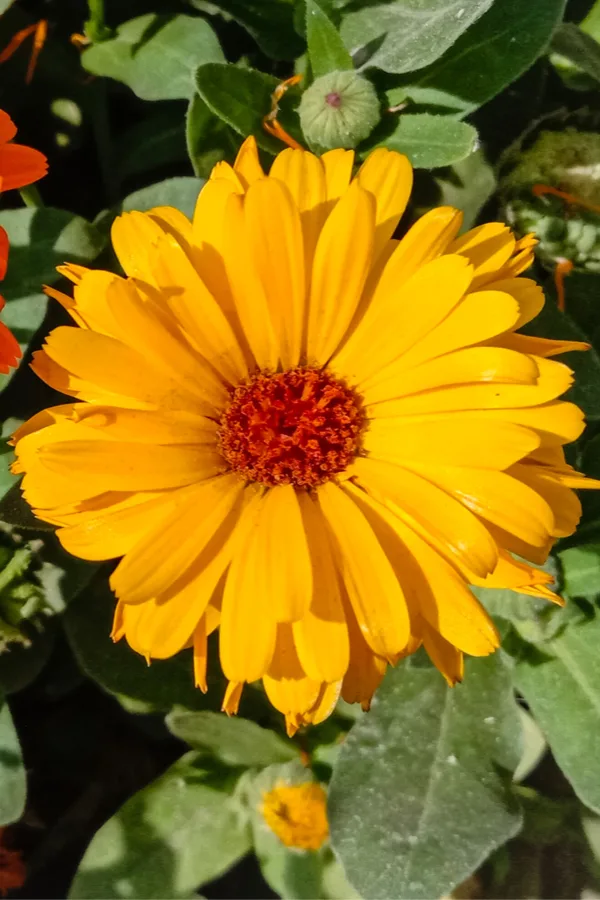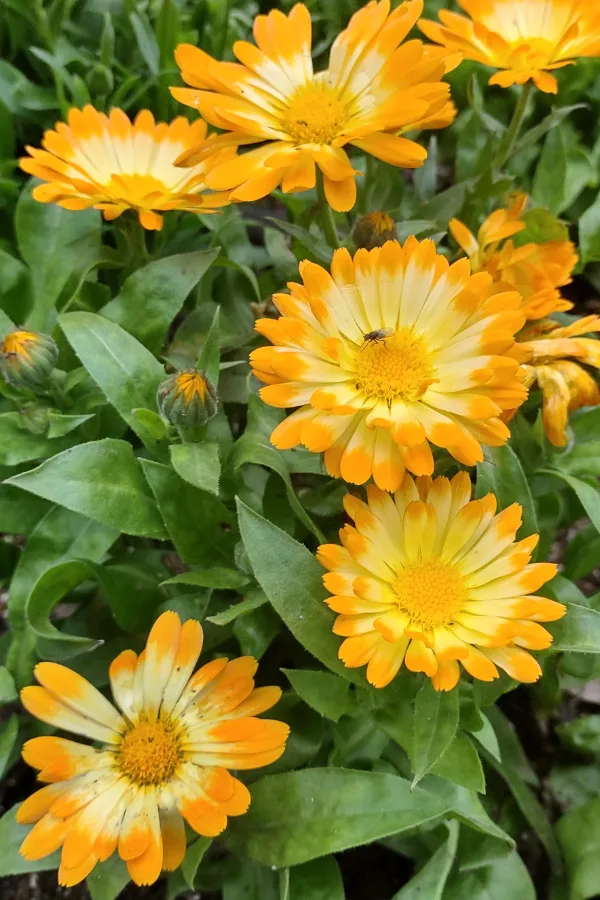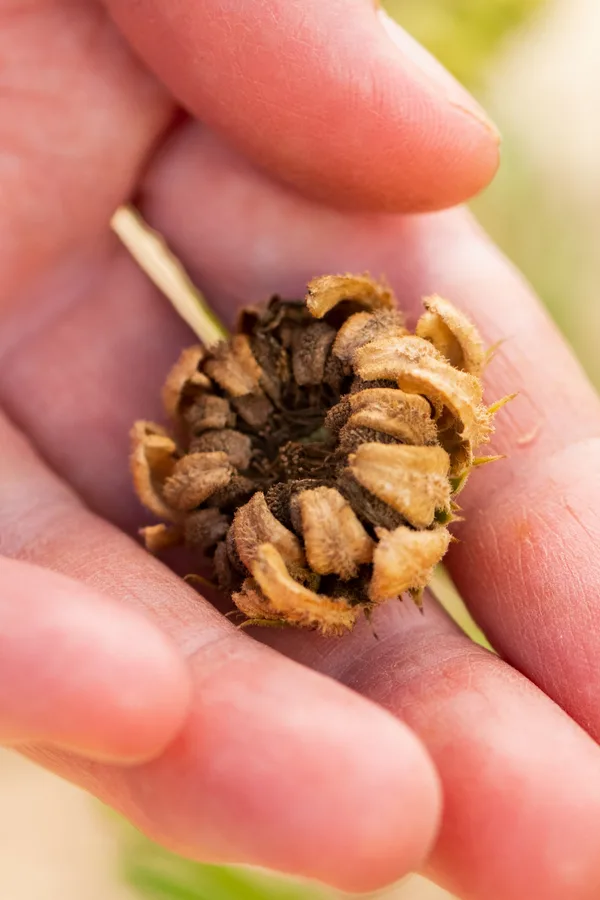Looking for a unique annual flower with gorgeous long lasting blooms – then you need to try your hand at growing Calendula.
Calendula is actually classified as an herbaceous perennial herb. But in most climates, it grows as a flowering annual. And can it ever flower strong and all season long!
In a day and age where many gardeners tire of using the same annual flowers each and every year, calendula is a refreshing change. Also known as Pot marigold, it is perfect as a bedding plant, or in containers and baskets.

What really makes Calendula unique is that it also happens to be edible. Both the leaves and flowers can be used to cook with, and many like them in fresh salads as well.
The flowers also have many medicinal herb uses as well, including anti-inflammatory and skin healing properties. See our article : How To Repel Insects With Herbs
How To Grow Calendula
All About Calendula – How To Grow Calendula
Calendula’s thick green foliage and daisy-like blooms add a touch of class and color anywhere. Although they prefer full-sun, they can tolerate partial shade. It is just one of the qualities that makes them such a great fit anywhere in the landscape.
With varieties available that bloom in yellow, orange, pink and cream, they can certainly add an everlasting splash of color. The plant works well as a companion flower, and its blooms mix well with other annuals and perennials.

When planted directly into flowerbeds, most varieties grow to between 12 to 24 inches in height. Potted plants will grow a bit smaller, but still fill their entire foliage canopy with a blanket of blooms.
Planting & Maintaining – How To Grow Calendula
Calendula grows quickly from seed. In fact, the plant can go from seed to bloom in as little as 8 weeks. Seeds can be started indoors and planted after the threat of frost has passed.
With it’s fast seed to bloom time however, calendula can be direct-sown right into flowerbeds. Allow the soil to warm a bit, and sow seeds as soon as night time temps only dip into the 50’s.

Although it will grow in poorer soils, calendula prefers loose, fertile soil for maximum bloom and growth. When planting in flowerbeds, mix in generous amounts of compost to the planting hole to provide plenty of nutrients as it grows.
In Season Care & Maintenance – How To Grow Calendula
Water seedlings and transplants frequently until plants have established roots into the soil. As a drought-resistant herbaceous plant, calendula actually suffers more as a mature plant from over watering than under watering.
Once plants have established in beds, they will rarely if ever need watering except in extremely dry or drought-like conditions. Container plants will require more frequent watering, but be sure soil has dried out completely between watering.

When plants are young, pinching back the top growth a few inches will help to create thick, sturdy foliage. It will also help the plant to fill it’s entire canopy with blooms as it keeps it more compact.
Mulching plants will help to keep competing weeds at bay, but keep mulch a few inches away form the main stem to prevent rot.
Fertilizing – How To Grow Calendula
Calendula does not require a big dose of additional nutrients to have a continuous bloom cycle. In fact, in fairly rich and well draining soils, the plant performs well without much additional fertilizing at all.
A light monthly dose of all-purpose fertilizer is more than enough to power plants to full blooms. A simple side dressing of fresh compost can also be used to provide a bit of slow-release nutrients to plants.
Deadheading – How To Grow Calendula & Keep It Blooming
If there is one thing that will keep calendula from blooming all summer, it’s leaving old flowers on the plant. Regular deadheading is a must to keep new blooms coming on.

When left in place, old flowers steal valuable nutrients from the plant. Nutrients that are vital to help the plant concentrate on forming new stems and blooms.
For maximum blooms, pinch or cut off old blooms and their flowering stems every few days. Remove as much of the stem behind the flower as you can down to the foliage canopy.
End Of Season Maintenance – How To Grow Calendula
With simple deadheading and minimal care, calendula will continue to bloom right up until the first frost. Although it is technically a perennial (Zone 9 through 11), for most areas, it can simply not survive the winter.
Plants can be covered to withstand a few late season frosts, but will eventually succumb to a hard frost or freeze. Once this occurs, plants can be pulled and composted.
You can easily save the seeds of calendula to plant again the following season. To save seeds, simply allow a few of the late season flowers to remain on the plant until completely dry.

Once the flower heads have dried out, simply cut the bloom free and remove the seeds by rubbing the flower head with your fingers. Simply store seeds in a cool, dark and dry area indoors, and then plant again the following spring.
Here is to growing calendula in your landscape, and experiencing the incredible beauty of this unique and versatile herbaceous plant. It truly is a great alternative to create a new look for your flowerbeds, containers and baskets!
Follow Our Facebook Page For Great Gardening Tips And Advice! This Is My Garden Facebook Page
This Is My Garden is a garden website created by gardeners, for gardeners. Jim and Mary Competti have been writing gardening, DIY and recipe articles and books and speaking for over 15 years from their 46 acre Ohio farm. They publish three articles every week, 52 weeks a year. Sign up today to follow via email, or follow along!
